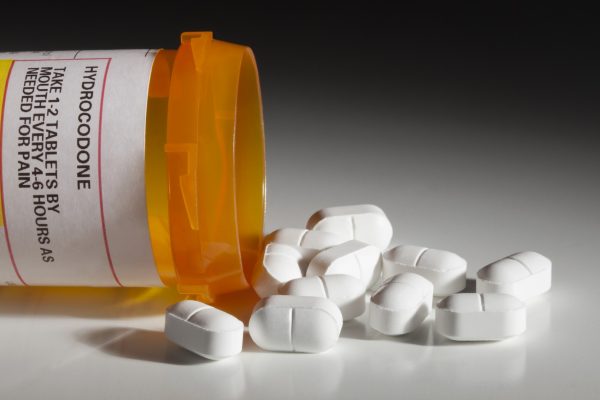
Opioid-related deaths have been steadily increasing in Washtenaw County according to the Health For All Washtenaw website. Courtesy of Tribune Media
By Claire Convis
Deputy Editor
With words like “drugs” and “overdose” so frequently thrown around in our culture, it’s easy to become disconnected from the realities of addiction until they hit close to home. Currently, Washtenaw County is in the midst of a deadly epidemic: substance abuse disorder (SUD).
The drug overdose death rate has been increasing over the last few decades; In 2011, there were 29 opioid-related deaths among Washtenaw County residents, but that number grew to 65 in 2014, and then to 81 in 2018.
A local tragedy
Mario Nanos is a University of Michigan alum who knows first hand the devastating results of opioid abuse. Nanos co-founded Washtenaw Families Against Narcotics in October, 2019, not long after his son died from opioid overdose.
Nanos’ son, Yanni, was a hockey player, part-time model and all-around “awesome guy,” with no prior arrests or trouble to speak of.
After a hockey incident, Yanni sustained injuries to both of his shoulders and went to see a doctor who prescribed him opioids to treat the pain.
Because Yanni was 18 and was considered an adult in the eyes of the law, his parents had no idea that Yanni was prescribed these drugs.
“Within months he was addicted,” said Nanos. “I found out because I noticed all of the tell-tale signs of addiction…physical appearance declining, not hanging out with the same group of friends, irritable, withdrawing…”
Nanos said Yanni once described his substance abuse disorder as an ongoing, everyday battle.
“He said, ‘It’s like a war. I’m a soldier in that war. And every day, I have to exercise, I have to eat right, I have to do my meditation exercises, I have to get enough sleep… so that when I wake up, I’m ready to do battle. And then if I make it through the war, I do it all over again,’” Nanos said.
Nanos and his wife had their son admitted into one of the best rehab centers in the country. About 14 months after Yanni was discharged and living in Calif., Nanos received a text from him saying that he had relapsed and that he was sorry. Nanos tried his best to connect Yanni with support while he prepared to fly out to his son, but it was too late.
“I got a call from the San Diego Police department letting me know he was found dead, alone in a hotel, with a needle in his arm,” Nanos said.
Yanni’s story speaks to an even bigger one, with impact felt across the country. Drug overdose deaths are the leading cause of injury deaths in the United States, and the majority of them occur from prescription painkillers, according to Health For All Washtenaw.
Countering an ‘epidemic’
The total number of opioid-related poisonings in Washtenaw County from January 2018 to September 2019 was 1,061, said epidemiologist Adreanne Waller from the Washtenaw County Health Department. Of those, 129 were fatalities, and 932 were emergency room visits for opioid-related poisonings, Waller said. Communications Manager of the Washtenaw County Health Department Susan Ringler Cerniglia said that this “epidemic” is something that whole community needs to work together to solve.
Naloxone is a life-saving overdose-reversal drug that counters the effects of opioid poisoning. According to the National Institute on Drug Abuse, Naloxone is “extremely” safe, and only effects someone with opioids in their system.
Nanos has teamed up with Teresa Herzog, the Collegiate Recovery Program (CRP) coordinator at WCC, and Liz Orbits, dean of support services, to host a free Naloxone training at WCC on Feb. 10.
At the Naloxone training, students will not only be educated on how to use Naloxone, but will also learn the signs of overdose, and how to perform CPR. Students will also learn about how Naloxone came to be, and free Naloxone kits will be distributed to participants. Participants must be 18 years or older.
Because of its effectiveness, access to Naloxone is becoming increasing available in the community through various local initiatives. At WCC, public safety officers are trained to use Naloxone.
“Obviously we want to connect people to treatment, but we also want people to have good access to Naloxone,” said Cerniglia.
Cerniglia, who has been with the department since 2005, said that an important partner has been the Washtenaw Health Initiative, which connects the Health Department with partners in substance abuse treatment and law enforcement.
In addition to the upcoming Naloxone training session, The WCC Collegiate Recovery Program hosts other educational events and is active on campus and in the community.
Communities guide recovery
Herzog’s focus at WCC is supporting students in recovery, including checking in with them and their needs, and connecting students to fun sober events, mental health services, and housing and financial assistance.
The CRP continues to create a more inclusive environment for those in recovery at WCC, and hopes to develop more representation of people in recovery in performing arts.
David Seaman, a 27-year-old WCC student and president of the CRP, said that since Herzog has become the group’s coordinator, the CRP has established a more steady routine and has been putting on more events.
The CRP began at WCC in Winter of 2019, and Seaman has been involved since the beginning. Seaman said that the group has been a great recovery network and allows students to build connections with each other.
“Just having a CRP group can break down the stigma surrounding SUD on campus,” said Seaman.
Seaman has battled with substance abuse from early on in his life, and has lost friends through overdose.
Seaman received a scholarship for treatment and housing, and began taking classes at WCC. He took advantage of the counseling services at WCC and met with a counselor regularly to discuss his journey towards sobriety and help him stay on track.
“We can be in recovery and we can be in school and have this well-rounded life without drugs and alcohol,” Seamen said. “In order to live in recovery, the stigma around SUD needs to die.”
The stigma surrounding substance use disorder can act as a barrier, preventing people from reaching out for help, Nanos said.
“We have to work on programs that change and save lives in our community in order to give these people a fighting chance at battling the most insidious disease that there is, and that’s addiction,” said Nanos. “Normally when you have a disease, you reach out and say ‘Wow, something’s wrong, I gotta get out to a doctor, I need help,’” said Nanos.
“There aren’t many people with a SUD … who raise their hand and say, ‘Will you please help me?’”
FAN works with families that have a loved one struggling with an SUD to support them and connect them with the resources they need.
“We want to be a reservoir of knowledge for people who are stunned when they learn that someone they care about has this disease,” said Nanos.
Seaman encouraged students who have dealt with or are currently dealing with a SUD to attend a CRP event and to follow the group’s Instagram page @wcc_crp, where students can receive event updates. Students with questions can also direct message Seaman or another group officer through the CRP instagram page.
Students at WCC can go to counseling and career planning to meet with Herzog directly and get connected to the Collegiate Recovery Program.
This the first part of an ongoing series on the opioid crisis in Washtnaw County.


One Reply to “Healing in the face of a community crisis”
Comments are closed.